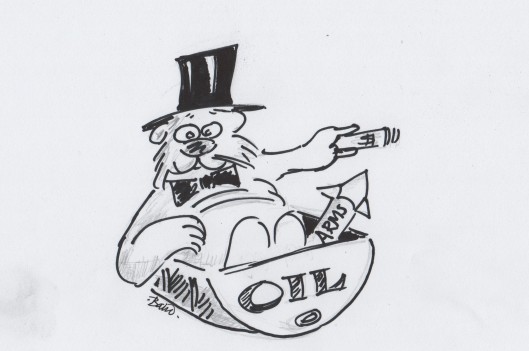| David Dayen Tuesday July 31, 2012 11:41 am | |
I was wondering whether FHFA Acting Director Ed DeMarco would respond to that Wall Street Journal article today pressuring him to allow participation from Fannie Mae and Freddie Mac in an Administration principal reduction program. Well, he has. DeMarco rejected participation for Fannie and Freddie, opting to go ahead with principal forbearance and other loan modification programs and blocking principal reduction. Here’s the entire statement:
The assumptions that went into the modeling look pretty low to me, and the alleged “costliness” of implementing the principal reduction program wildly overblown. Finally, DeMarco trotted out that moral hazard argument again, saying that homeowners will “strategically default” to get eligible for a modification. I’ve already explained that no homeowner will operate on the expectation of goodwill from a servicer by putting themselves in a vulnerable position to lose their home. It just won’t happen. The modeling done here is informed by ideology, not facts.
Hilariously, FHFA announced a separate initiative with the Treasury Department to streamline short sales, which of course are a form of principal reduction (the borrower sells the house at a price lower than what they owe on the mortgage, and the mortgage holder forgives the balance).
Tim Geithner fired off an angry letter to DeMarco today, asking him to reconsider on barring principal reductions. Geithner accused DeMarco of using “selective numbers” in the FHFA analysis.
More from Nick Timiraos. If Treasury and the Administration really don’t like what DeMarco’s done here, they probably have options for dismissal. But I wouldn’t expect that.
I will again preview the fact that principal reductions will do absolutely nothing and in fact be counter-productive if Congress doesn’t extend the law that allows them to be excluded from gross income for tax purposes. More on that to come.
UPDATE: Rep. Brad Miller responds:
FHFA also released their correspondence to members of Congress over this issue, and a paper explaining their rationale. But you can boil it down to this: DeMarco doesn’t like principal reductions. The analysis showed pretty clearly that Fannie and Freddie would benefit financially from the program, because of the reduction in the likelihood of defaults after principal reductions. Homeowners would benefit in terms of saving their homes. TARP money which has already been authorized would go toward its intended purpose. But DeMarco inserted himself as executor of all housing programs with that turn of phrase “and minimize the expense of such assistance to taxpayers.” He now considers himself the guardian of TARP funds, not just GSE funds, and he did not accept the argument that shifting losses from the GSEs to TARP represented a net positive for his bottom line. DeMarco says that explicitly in this letter to the Senate Banking Committee:Today, I provided a response to numerous congressional inquiries as to whether the Federal Housing Finance Agency (FHFA) would direct Fannie Mae and Freddie Mac to implement the Home Affordable Modification Program Principal Reduction Alternative (HAMP PRA). After extensive analysis of the revised HAMP PRA, including the determination by the Treasury Department to begin using Troubled Asset Relief Program (TARP) monies to make incentive payments to Fannie Mae and Freddie Mac, FHFA has concluded that the anticipated benefits do not outweigh the costs and risks. Given our multiple responsibilities to conserve the assets of Fannie Mae and Freddie Mac, maximize assistance to homeowners to avoid foreclosures, and minimize the expense of such assistance to taxpayers, FHFA concluded that HAMP PRA did not clearly improve foreclosure avoidance while reducing costs to taxpayers relative to the approaches in place today.
I have also previewed for Congress several housing-related initiatives to strengthen the loss mitigation and borrower assistance efforts of Fannie Mae and Freddie Mac as well as improve the operation of the housing finance market. These initiatives include new and consistent policies for lender representations and warranties, alignment and simplification of the Enterprise short sales programs, and further enhancements for borrowers looking to refinance their mortgages.
Who’s business is it of Ed DeMarco to fret about the cost of TARP? TARP has a mandate of mitigating foreclosures and helping homeowners. DeMarco seems to think that his mandate is to protect the taxpayer across the whole of government. And he’s just wrong about that.The results of this analysis that are most favorable to employing principal forgiveness demonstrated that implementing HAMP PRA may result in approximately 74,000 to 248,000 borrowers being eligible for principal reduction modifications (based on a range of plausible take-up rates) at a positive financial benefit to the Enterprises. However, nearly all of this benefit is simply a transfer from taxpayers to the Enterprises, which would add to the over $188 billion in taxpayer support the Enterprises have already received. Under other reasonable
assumptions, implementing HAMP PRA would actually increase taxpayer costs.
The assumptions that went into the modeling look pretty low to me, and the alleged “costliness” of implementing the principal reduction program wildly overblown. Finally, DeMarco trotted out that moral hazard argument again, saying that homeowners will “strategically default” to get eligible for a modification. I’ve already explained that no homeowner will operate on the expectation of goodwill from a servicer by putting themselves in a vulnerable position to lose their home. It just won’t happen. The modeling done here is informed by ideology, not facts.
Hilariously, FHFA announced a separate initiative with the Treasury Department to streamline short sales, which of course are a form of principal reduction (the borrower sells the house at a price lower than what they owe on the mortgage, and the mortgage holder forgives the balance).
Tim Geithner fired off an angry letter to DeMarco today, asking him to reconsider on barring principal reductions. Geithner accused DeMarco of using “selective numbers” in the FHFA analysis.
More from Nick Timiraos. If Treasury and the Administration really don’t like what DeMarco’s done here, they probably have options for dismissal. But I wouldn’t expect that.
I will again preview the fact that principal reductions will do absolutely nothing and in fact be counter-productive if Congress doesn’t extend the law that allows them to be excluded from gross income for tax purposes. More on that to come.
UPDATE: Rep. Brad Miller responds:
“I join Secretary Geithner in urging that FHFA reconsider the decision to continue to refuse any principal reduction in Fannie’s and Freddie’s loan modification program. FHFA’s own analysis shows that targeted principal reductions would save taxpayers money as well as help many homeowners avoid foreclosure.
We are five years into the housing crisis, and FHFA remains paralyzed by the fear that somehow homeowners innocently trapped in the worst economy since the Great Depression are going to weasel out of paying every penny on their mortgage that they could. More than any private business or government agency, FHFA has the economic and legal power to break the cycle of declining home values and foreclosures that has stunted economic recovery, and has consistently failed to exercise that power with the imagination and urgency required.”


 13 Comments
13 Comments













